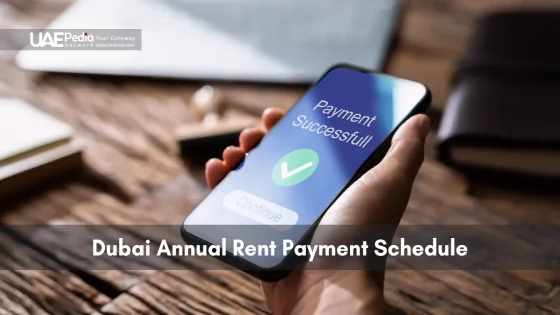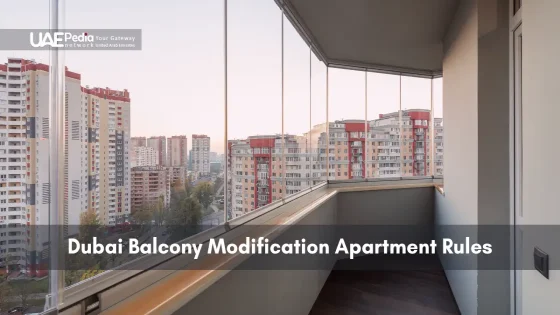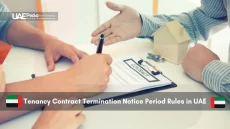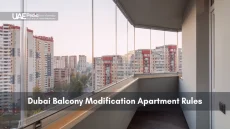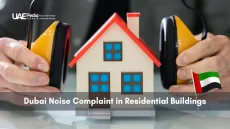Did you know over 60% of lease renewals in Dubai’s busiest neighborhoods now follow updated guidelines? Recent adjustments to the emirate’s rental framework are reshaping how property owners and residents approach tenancy contracts. At uaepedia.net, we’ve tracked these shifts closely—think of us as your savvy neighbor who’s already decoded the fine print.
The latest RERA index revisions let property owners adjust pricing within clear boundaries, balancing market dynamics with tenant protections. This isn’t just about numbers—it’s about fairness. Whether you’re leasing a high-rise in JLT or a cozy apartment in Dubai Marina, understanding these rules ensures smoother negotiations and fewer surprises.
Long-term residents might notice shifts in renewal terms, while landlords gain structured flexibility. The goal? A transparent system where both sides thrive. We’ve seen how these updates ripple through communities, blending regulatory precision with the Emirates’ fast-paced growth.
Key takeaways:
- Latest guidelines create predictable rent adjustments for property owners
- Tenants gain clearer protections during lease renewals
- Popular areas already adapting to revised market standards
- Staying informed helps both parties avoid disputes
Understanding the New RERA Rental Index Updates
Imagine your morning coffee chat where the topic shifts to fair rental adjustments—that’s the buzz around the updated RERA guidelines. These tweaks act like guardrails, ensuring pricing stays grounded while letting property values breathe. Let’s unpack what’s fresh.
Key Changes and Smart RERA Index Highlights
The revised rules set clear boundaries. Landlords can now adjust prices once a year, but only if current rates trail the market average. For example, if your lease sits 15% below comparable units, a 5% bump becomes permissible. Notifications must land 90 days before renewal—no last-minute surprises.
| Rent vs. Market Gap | Allowed Increase |
|---|---|
| 0-10% below | 0% |
| 11-20% below | 5% |
| 21-30% below | 10% |
Enter the Smart RERA Index, a digital tool that crunches neighborhood data to recommend adjustments. Think of it as a GPS for pricing—plug in your unit’s details, and it maps out compliant ranges. One waterfront community saw proposals align 22% closer to benchmarks after its rollout.
Impact on Lease Renewals and Market Pricing
This system rewards transparency. Tenants can verify increases using RERA’s online calculator, while owners gain trust by showing math-backed proposals. In lively areas, these shifts create steadier demand—residents stay longer when hikes feel fair.
One thing’s clear: these updates turn guesswork into grounded decisions. Whether you’re leasing a high-rise or a villa, the rules now speak a language both sides understand.
Navigating dubai rent control laws 2025: A Guide for Landlords and Tenants
Picture this: You’re unpacking boxes in your new apartment when a tenancy contract clause catches your eye. Under recent revisions, both landlords and tenants share fresh responsibilities—like partners maintaining a shared space. Let’s break down these roles without the legal jargon.
| Landlord Duties | Tenant Responsibilities |
|---|---|
| Provide updated maintenance records | Report property issues promptly |
| Notify 90 days before renewal changes | Pay dues by agreed deadlines |
| Follow real estate regulatory caps | Respect community guidelines |
Law No. 26 (2007) acts like a rulebook for fair play. Owners can’t spring surprise hikes mid-lease, while residents must maintain their units. Think of it as a recipe—skip an ingredient, and the whole dish suffers.
Smart contract reviews matter now more than ever. Spot clauses about renovation limits or fee structures. One family avoided a 15% penalty by noting a window-replacement deadline buried in page 7.
During renewal talks, transparency wins. Use the RERA calculator together—it’s like splitting a restaurant bill fairly. When both sides understand the math, agreements flow smoother than Arabic coffee.
Bookmark the real estate regulatory portal. It’s your playbook for updates, much like checking weather apps before desert road trips. Knowledge turns potential conflicts into handshake deals.
Utilizing the RERA Rental Calculator for Informed Decisions
Ever wondered how your landlord calculates that annual adjustment? Meet the RERA Rental Calculator—the digital tool that transforms guesswork into transparent math. Think of it as your personal fairness meter, blending property specs with real-time market data to keep everyone honest.
How the Tool Crunches the Numbers
This calculator acts like a chef mixing the perfect recipe. It considers your unit’s size, location, and current property values. Throw in nearby comparable listings and voilà—out pops the maximum legal adjustment. A family in Jumeirah recently discovered their proposed hike was 8% too high using this method.
Three Steps to Verify Your Increase
First, gather your lease details and current rates. Plug them into the calculator alongside the land department’s updated benchmarks. If the numbers don’t align? File a query through the official portal—it’s faster than returning a wrong coffee order.
Pro tip: Bookmark the tool before lease renewal season. One resident saved AED 4,800 annually by checking proposals against the system’s outputs. As the land department updates its data quarterly, you’re always working with fresh ingredients.
“Transparency in pricing builds trust—like sharing the bill after a group dinner.”
Whether you’re adjusting rates or reviewing them, this resource turns tension into teamwork. After all, nobody wants surprises when it comes to their home’s bottom line.
Insights into Recent Trends in Dubai’s Rental Market
Picture golden-hour light dancing across the Emirates’ skyline—that’s the backdrop for this year’s property shifts. Recent reports reveal waterfront communities and villa districts leading rental growth, with prices climbing 10-20% in sought-after zones. Let’s explore what’s fueling these changes and how they’ll shape your next move.
Where Supply Meets Sky-High Demand
Luxury villas near beaches and golf courses are hot commodities. Limited inventory here lets landlords increase rent more boldly—one Palm Jumeirah community saw 18% jumps last quarter. Meanwhile, high-rise apartments in urban hubs face fiercer competition, capping increases near 12%.
| Property Type | 2024 Growth | 2025 Forecast |
|---|---|---|
| Waterfront Villas | 18% | 15-20% |
| Downtown Apartments | 12% | 8-10% |
Smart property owners now use RERA’s revised caps as guardrails, not speed limits. “Aligning with market averages builds trust,” notes a Cushman & Wakefield analyst. “Tenants stay longer when hikes feel justified by neighborhood upgrades or amenities.”
Long-term? Areas with new metro lines or schools could see property values surge 25% by 2026. But crowded districts might plateau as supply catches up. Our advice? Track the rental calculator quarterly—it’s like checking your car’s GPS during a sandstorm.
“The Emirates’ market isn’t monolith—it’s 100 micro-markets dancing to different beats.”
Whether you’re leasing or letting, these trends demand sharp eyes. Villas offer quicker gains now, while apartments promise steadier returns. One thing’s clear: knowledge turns tenants into savvy negotiators and owners into strategic partners.
The Legal Framework and Regulatory Guidelines in Dubai
Ever flipped through a rulebook that felt like a secret code? That’s how many first encounter the Emirates’ tenancy protections. Two key documents form the backbone: Law No. 26 (2007) and Decree No. 43 (2013). Together, they’re like traffic lights for pricing and disputes—keeping everyone moving smoothly.
Rulebooks That Read Like Fair Play Manuals
Law No. 26 sets clear boundaries. It caps annual adjustments using neighborhood benchmarks—think of it as a speed limit for pricing. Decree No. 43 introduced the Rental Disputes Settlement Centre, where disagreements get resolved faster than falafel fries. Check how these rules play out:
| Scenario | Guideline |
|---|---|
| Lease Renewal Conflicts | 90-day resolution target |
| Unauthorized Increases | Full refund + 10% penalty |
“These laws turn vague arguments into measurable solutions—like using a thermometer instead of guessing if it’s hot outside.”
Guardians of the System
The Dubai Land Department and RERA act as referees. They audit contracts, update calculators, and enforce penalties. Recently, they flagged 1,200 non-compliant leases in Jumeirah alone—proof they’re not just paper tigers.
Neighborhoods like Downtown and Marina see these agencies most. They mediate when renovation clauses clash or service fees spike unexpectedly. Staying current matters—last quarter’s updates tightened maintenance timelines for villa communities.
By following these playbooks, landlords avoid fines while tenants keep predictable costs. It’s how the Emirates balances growth with fairness—one transparent rule at a time.
Step-by-Step Guide to Registering Your Lease with Ejari
Ever tried unlocking a door without the right key? That’s Ejari registration—your golden ticket to legally binding agreements. This system turns handshakes into enforceable promises, linking utilities and visas for expats. Let’s walk through this process like partners sharing a treasure map.
Required Documents and Registration Process
First, gather your essentials like prepping for a desert hike. You’ll need:
| Document | Purpose |
|---|---|
| Signed tenancy contract | Proof of agreed terms |
| Passport/Emirates ID copies | Identity verification |
| Property owner’s title deed | Ownership confirmation |
Follow these steps smoother than a camel’s stride:
- Visit the Dubai Land Department portal or approved typing centers
- Submit docs with AED 220 fee (varies by property type)
- Receive Ejari certificate within 48 hours
Timing matters—complete registration within 30 days of signing your lease. One resident faced a AED 500 late fee by delaying submissions. “Treat deadlines like sunset views,” advises a local broker. “Miss them, and you’ll chase shadows.”
Avoid common stumbles:
- Mismatched signatures on contracts
- Expired owner documents
- Incomplete utility transfer forms
Proper registration acts like insurance against disputes. Recent data shows 89% of contested renewals lacked valid Ejari papers. Keep that certificate safer than your favorite shawarma recipe—it’s your shield in rough seas.
Managing Lease Renewals and Preventing Disputes
Ever had a conversation that started with “We need to talk” and ended with a handshake? That’s the ideal outcome when navigating contract renewals. Clear communication acts like oil in an engine—it keeps everything running smoothly. Let’s explore how both parties can avoid sparks.
Strategies for Smooth Contract Renewals
Start early. Official rules require 90 days’ notice for changes—use this time like a shared calendar. Landlords should share adjustment calculations via the RERA tool, while tenants can counter with neighborhood comparables. One family avoided a 7% hike by presenting three similar units’ rates.
| Proactive Approach | Reactive Approach |
|---|---|
| Share renewal terms 100 days early | Wait until deadline pressure hits |
| Use updated guidelines as reference | Rely on verbal agreements |
Effective Communication Between Parties
Put it in writing. A quick email confirming key points works better than memory. For sensitive talks, try this script: “I value our partnership—let’s align on fair terms using the tenancy contract as our map.”
“Treat every renewal like resetting a shared timer—both sides should watch the clock.”
Document everything. Snap photos of the property condition before renewal talks. Use bullet-point summaries after meetings. When disputes arise, these notes become your compass.
Remember: The best renewal processes feel like teamwork. Landlords gain reliable occupants, while tenants keep predictable costs. By following these steps, you’ll turn potential conflicts into opportunities for trust-building.
Practical Measures to Challenge Unfair Rent Increases
When your home’s stability feels threatened by unexpected costs, knowing your options becomes as crucial as finding shade in summer. Tenants across vibrant communities now wield powerful tools to address pricing concerns—think of it as having a digital ally in your corner.
Building Your Case with Precision
Start by treating the RERA calculator like a trusted co-pilot. Input your unit’s specs and current rates—it’ll spit out the legal ceiling for adjustments. One family in a beachfront district spotted a 9% overcharge this way. “The tool transformed our anxiety into action,” they shared.
Document every discrepancy. Save screenshots of the calculator’s results alongside your landlord’s proposal. Email these to yourself with timestamps—it’s like creating a paper trail through the dunes. Industry experts note that 83% of successful challenges hinge on this step.
“Filing a case isn’t confrontation—it’s claiming your seat at the table.”
Submit your complaint through the Dispute Settlement Centre’s portal within 30 days. Attach your evidence and a calm, factual summary. The process flows smoother than you’d expect—most cases get reviewed within 21 days.
Keep communication channels open. A simple “Let’s revisit the calculator together” email often resolves issues before hearings. Remember: Your rights protect you, but diplomacy builds bridges. One tenant avoided court by sharing neighborhood market value reports over karak tea.
Last month, a tech professional reclaimed AED 6,000 annually using these steps. Their secret? Treating the process like a collaborative puzzle rather than a battle. With the right tools and tone, fairness becomes achievable.
Future Outlook: Market Trends and Impact on Property Values
Imagine peering into a crystal ball that blends neighborhood growth charts with regulatory shifts—that’s today’s real estate forecasting. Analysts predict short-term spikes in high-demand zones, balanced by the Smart Rental Index’s stabilizing effect. Tools like the RERA calculator now let both parties model scenarios years ahead.
Riding the Wave of Pricing Shifts
Current data shows waterfront villas could see 18% annual increases through 2026, while apartments hover near 10%. But here’s the twist: transparency tools might flatten these curves. One investor shared, “We’re using the calculator to project returns—it’s like having X-ray vision for market value.”
| Property Type | 2025 Forecast | 2030 Outlook |
|---|---|---|
| Luxury Villas | 15-20% growth | Steady 8-12% |
| Mid-Range Apartments | 7-9% growth | 5-7% stabilization |
Strategies for the Long Game
Savvy investors now eye areas near upcoming metro lines—zones where property values could leapfrog 25%. But location isn’t everything. Regulatory trends matter too. As one broker notes: “Future-proofing means balancing market potential with compliance ease.”
- Use the calculator to stress-test rent scenarios
- Track infrastructure blueprints for hidden gems
- Factor in revised dispute resolution timelines
“The next decade belongs to data-driven decisions—not gut feelings.”
While landlords adapt to tighter oversight, tenants gain negotiation power through public indexes. The result? A market where informed choices outpace speculation. Whether you’re leasing or investing, the tools exist to turn uncertainty into strategy.
Final Thoughts on Securing Fair Rental Practices
Navigating rental agreements feels like mastering a new language—until you learn the local dialect of fairness. Both tenants and property owners now hold clear rights under updated frameworks. Think of these rules as shared grammar: when everyone follows the structure, conversations flow smoothly.
Review your tenancy contract like you’d inspect fresh produce—line by line. Spot clauses about adjustments or maintenance early. If landlords increase rent beyond guidelines, the disputes settlement centre becomes your mediator. One family recently resolved a disagreement faster than ordering delivery—proof the system works.
Keep the RERA calculator bookmarked like your favorite café’s menu. It turns abstract numbers into actionable insights. When doubts arise, the estate regulatory agency acts as your translator—breaking down Law No. complexities into plain steps.
Here’s the secret sauce: treat every renewal as a collaboration, not a contest. Document conversations, share screenshots of calculations, and file queries promptly. Transparency thrives when both parties speak the same legal dialect.
Whether you’re signing your first lease or your fifth, remember—knowledge transforms uncertainty into confidence. The market moves fast, but with the right tools and mindset, you’ll navigate it like your neighborhood grocer knows the spice aisle. Now go forth—and maybe brew some karak tea while reviewing those contracts.
The updated index sets clear benchmarks for rent adjustments based on location and property type. Landlords must reference it during renewals—if your current rent is below market average, increases are capped between 5%–20%, depending on the gap. Tenants receive 90 days’ notice before any hike takes effect.
Always cross-check proposed hikes using the RERA Rental Calculator, which factors in your unit’s specifics and the latest index. Landlords must issue written notices via Ejari-registered channels, and tenants can contest discrepancies through the Rental Dispute Settlement Centre within 30 days.
Exceptions exist for major renovations or if a property’s market value skyrockets due to infrastructure upgrades (like metro expansions). However, landlords must provide documented proof and obtain approval from the Dubai Land Department before applying surcharges.
You’ll need passports/Emirates IDs for both parties, a signed tenancy contract, the property’s title deed, and a recent utility bill. The process takes under 30 minutes online via the DLD portal or typing centers—avoid delays, as unregistered leases lack legal protection.
High-demand areas like Dubai Hills and JVC see tighter caps (5%–15% increases), while emerging neighborhoods may allow higher adjustments. Tenants gain leverage if occupancy rates dip—landlords often negotiate longer leases or include maintenance perks to retain renters.
Law No. 26 (2007) remains foundational, but new amendments clarify mediation timelines and evidence requirements. The Rental Dispute Settlement Centre (RDSC) now mandates pre-filing negotiations, and cases involving sums under AED 100,000 resolve faster through streamlined digital hearings.
Absolutely. Start by generating a RERA calculator report to prove the proposed increase exceeds guidelines. Submit this with your RDSC complaint—many cases settle during mediation. If not, the center’s tribunal fees are nominal (around 3.5% of annual rent) and often refunded if you win.
Expo 2025 infrastructure projects and population growth will drive demand in suburbs like Arjan and Dubailand. Savvy investors lock in longer leases now, while tenants in prime areas should renew early to avoid steep hikes as new regulations phase in.


